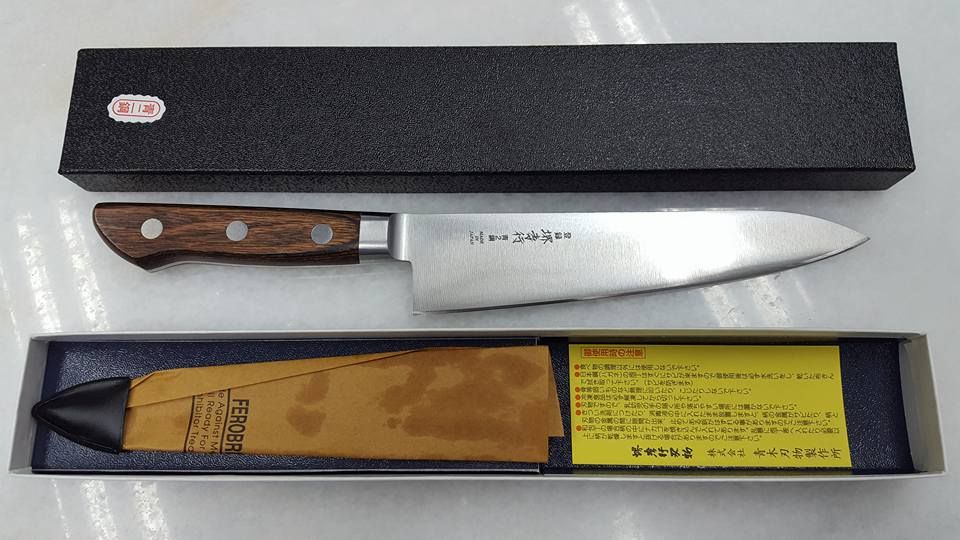aichmophobia
Well-Known Member
- Joined
- May 15, 2016
- Messages
- 45
- Reaction score
- 0
I received another Sakai Takayuki knife today. It is a blue 2 carbon steel gyuto 18cm with bolster (heat treated). In Japanese, chef knife made from blue steel is considered for professionals, white steel is for business, and others are for home cooking. So I got my first Pro knife, yay!
Is this knife forged? semi-forged? It has a bolster, so it must be forged, right? But the blade and the tong look like stamped.
Its label says it was heat treated. May I ask can you oil quenched blue steel? It has hardness of 60-62, so it must be water quenched, right?

Is this knife forged? semi-forged? It has a bolster, so it must be forged, right? But the blade and the tong look like stamped.
Its label says it was heat treated. May I ask can you oil quenched blue steel? It has hardness of 60-62, so it must be water quenched, right?






